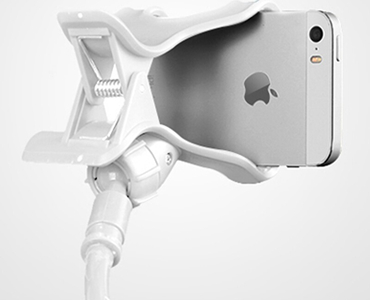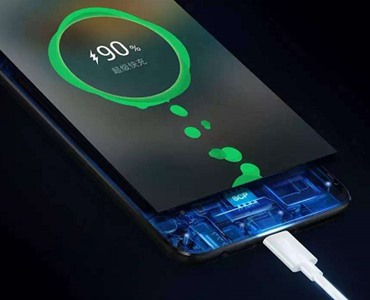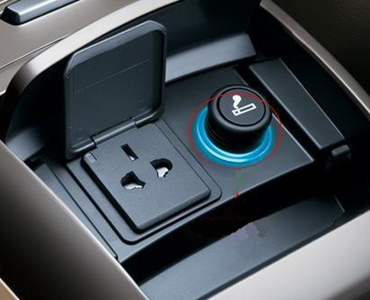691 views Yuda Electronic (HK) Technology Co.,Limited. 2019-03-12
The popularity of wireless chargers has been around for a while. At this stage, there are four different ways of wireless charging: electromagnetic induction, electromagnetic resonance, electric field coupling, and radio wave. Among them, the technology used for wireless charging of mobile phones is mainly electromagnetic induction technology and electromagnetic resonance technology. Of course, once wireless charging breaks through technical barriers, it will also have very broad prospects in future home appliances and electric vehicles.

First, wireless charger – electromagnetic induction
Most of the wireless charging technologies we see today use electromagnetic induction technology, and we can think of this technology as a separate transformer.
We know that the widely used transformer now consists of a core and two coils (primary coil, secondary coil); when an alternating voltage is applied across the primary coil, an alternating magnetic field is generated in the core. Thereby, an alternating voltage of the same frequency is induced on the secondary coil, and the electrical energy is transmitted from the input circuit to the output circuit.
If the coil at the transmitting end and the coil at the receiving end are placed in two separate devices, when electric energy is input to the transmitting end coil, a magnetic field is generated. When the magnetic field senses the coil at the receiving end, a current is generated, so that we construct A set of radio energy transmission systems.
The main drawback of this system is that the magnetic field is rapidly weakened with increasing distance. Generally, it can only work in the range of 10 cm. Since the energy is diverging in all directions, the induced current is much smaller than the input current, and the efficiency is not high.
The first wireless charging product that utilized this principle was an electric toothbrush. The electric toothbrush was contactlessly charged due to frequent contact with water, which made the charging contact point not exposed and enhanced the waterproofness of the product.
There is a coil in the charging socket and the toothbrush. When the toothbrush is placed on the charging stand, there is magnetic coupling. The principle of electromagnetic induction is used to transmit power, and the induced voltage can be rectified to charge the rechargeable battery inside the toothbrush.
The electromagnetic induction method is characterized by short transmission distance and relatively fixed use position, but high energy efficiency and simple technology, and is suitable for use as a wireless charging technology.

Second, wireless charger – electromagnetic resonance
Compared with electromagnetic induction, electromagnetic resonance technology is longer in distance and more flexible in use.
Electromagnetic resonance also uses two perfectly matched coils. One coil generates a magnetic field when energized, and the other coil resonates and generates current to illuminate the bulb or charge the device.
In addition to the increase in distance, the electromagnetic resonance method can also charge multiple devices at the same time, and there is no strict restriction on the position of the device, and the flexibility of use ranks first in various technologies.
In terms of transmission efficiency, the electromagnetic resonance method can reach 40% to 60%。although the charging efficiency is relatively low, due to its very good flexibility, it is currently the focus of development in the industry.
Third, wireless charger – electromagnetic coupling
Compared with the traditional electromagnetic induction type, the electric field coupling method has three major advantages: the position of the device during charging has a certain degree of freedom; the electrode can be made thin and easier to embed; the temperature of the electrode does not rise significantly.
First of all, in terms of position, although its distance can not reach the length of several meters like magnetic resonance, it is also free in the horizontal direction, and the user can charge the terminal by placing the terminal on the charging stand at will.
We can see the comparison between electric field coupling and electromagnetic induction. The misalignment between the electrodes or coils is represented by the dz/D parameter. When the parameter is 0, it means that the two are completely coincident, and the energy efficiency is at the highest state.
When the parameter is 1, it means that the two do not overlap at all. At this time, the electric field coupling mode only reduces the energy input by 20%, the device can still be charged normally, and the electromagnetic induction type is slightly wrong, the energy efficiency is rapidly decreased, and the displacement is misplaced. When it is more than 0.5, it will not work at all. Therefore, electromagnetic induction always requires very precise position matching.
The second characteristic of the electric field coupling method is that the electrode can be made very thin. For example, it can use copper foil or aluminum foil with a thickness of only 5 micrometers. In addition, the shape and material of the material are not required, and the transparent electrode and the thin film electrode can be used. In addition to the square shape, it can be made into any other unconventional shape.
The third advantage is that the temperature of the electrode portion does not rise – one of the problems that plagues the wireless charging technology is that the temperature at the time of charging is high, which causes the battery pack close to the electrode or the coil to be deteriorated by heat, thereby affecting the life of the battery.
The electric field coupling method does not have such a problem, and the temperature of the electrode portion does not rise. The non-heating of the electrode portion is mainly due to the increase in voltage, such as raising the voltage to about 1.5 kV during charging, at which time the current flowing through the electrode is very small.
However, the power supply circuit of the power transmission module and the power receiving module still generates a certain amount of heat, which generally causes the internal temperature to increase by about 10 to 20 ° C, but the circuit system can be placed at a remote location to avoid affecting the internal battery.
The electric field coupling method has the advantages of small volume and low heat generation, and has disadvantages in that development and supporters are few.

Fourth, wireless charger – microwave resonance mode
Intel Corporation is a proponent of the microwave resonance method. This technology uses microwave as the energy transmission signal. After the receiver receives the energy wave, it is restored to the DC power available to the device through the resonance circuit and the rectifier circuit.
This method is equivalent to our commonly used Wi-Fi wireless network. Both parties have their own dedicated antennas. The difference is that this time it is not the signal but the electrical energy.
The microwave frequency is between 300MHz and 300GHz, and the wavelength is in the millimeter-decimeter-meter range. The microwave transmission energy is very powerful. The microwave oven in our home uses its thermal effect, and Intel’s microwave wireless charging technology, It is to convert the microwave energy back into an electrical signal.
The shortcomings of the microwave resonance method are quite obvious, that is, the energy is divergent in all directions, resulting in very low energy utilization efficiency. For example, Intel’s solution supplies power as low as 1 watt or less. The advantage is that the position is very flexible, as long as the device is placed near the charging device, the position requirements are very low, which is the most natural way to charge.
Although energy and efficiency are at a low level, Intel’s approach is quite clever as a giant in the PC industry: Intel designed Ultrabook as the transmitter for wireless charging, and the mobile phone as the receiving end, so as long as the phone is placed next to the ultrabook, you can charge continuously and unconsciously. I believe that most users have the habit of putting their mobile phones on the desktop when they go to work. At this point, the charging work can start in the background.

Cell phone accessories wholesale business can get high profits. But the market is fierce. Big bra...

Does fast charging reduce phone battery life? In order to allow everyone to understand this matt...

How to install the car charger: 1. Insert the USB power adapter into the car cigarette lig...